
- Bring your own drinks
-

- Cats live here
-
Wheelchair access
- Not wheelchair accessible
-
- Some stairs may be present in the space
-
- Click here for more accessibility details
-
- Kid-friendly event
This is an outdoor groupmuse
A live in-person performance in a backyard or another outdoor space. They're casual and friendly, hosted by community members.
Hosts
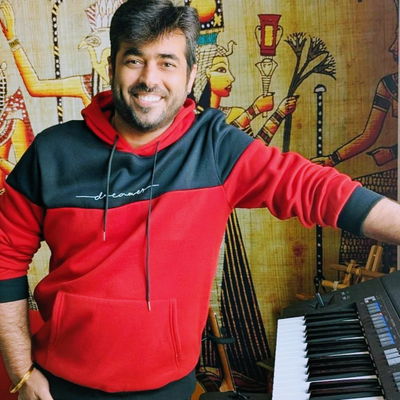
This program is a journey into the world of Hindustani classical music, the North Indian classical tradition, performed on the sarod with live tabla accompaniment. This concert features award winning musicians Souryadeep Bhattacharyya on the sarod and Sandip Ghosh on the Tabla. The sarod’s deep, resonant tone captures both meditative stillness and vibrant rhythmic energy, perfected by the majestic tabla accompaniment carrying the heritage of the Indian subcontinent while speaking directly to the present moment.
About the Artists:
Souryadeep Bhattacharyya is an award-winning sarod player trained under the Guru-Shishya Parampara in the Maihar Gharana under Pt. Alok Lahiri, with his foundational training in the Rampur-Shahjahanpur Gharana under Late Jayanta Roychowdhury. With over three decades of training, he has been recognized as an All India Gold Medalist in Instrumental Music, and is an empaneled artist of both the Indian Council for Cultural Relations (ICCR) and All India Radio. He has performed at prestigious venues such as Lincoln Center (New York), the Chicago Cultural Center, the Indian Consulate in Chicago, and on major stages and festivals across India and the U.S. With his expressive playing and storytelling approach, Souryadeep continues to carry forward the rich heritage of Hindustani classical music, making it accessible and meaningful to global listeners.
Sandip Ghosh is an accomplished tabla artist whose musical journey began under Pt. Gobindo Bose and deepened through over 25 years of dedicated training with the legendary Pt. Anindo Chatterjee in the Guru-Shishya Parampara. He has also received rare guidance for more than 15 years from Vidushi Kaushiki Chakraborty and Pt. Ajoy Chakraborty, shaping his holistic approach to music. A first-class master’s graduate in music from Rabindra Bharati University, Sandip has earned numerous accolades worldwide. As an acclaimed accompanist, he has performed with some of the finest names in Indian classical music, including Pt. Ajoy Chakraborty, Vidushi Kaushiki Chakraborty, Pt. Kushal Das, Pt. Tejendra Narayan Majumder, Ustad Shahid Parvez, Vidushi Aruna Sairam, Ustad Aashish Khan, Ustad Shujaat Khan, Pt. Ulhas Kashalkar, Ustad Rashid Khan, Pt. Purbayan Chatterjee, and Pt. Rakesh Chaurasia, among many others.
First half: about 45-60 minutes
The heart of the evening will be a performance of one or more Raags, the melodic framework of Indian classical music. A Raag is more than a scale; it is a living mood that evokes a time of day, a season, and an emotion. The music begins with a slow, free-flowing alaap—an unaccompanied exploration of the raga’s phrases and mood—before gradually building pulse and rhythm. With the entrance of the tabla, the performance blossoms into intricate improvisations, weaving melody and rhythm in a dynamic dialogue.
Each Raag is a new journey. No two performances are ever the same—every note is shaped by tradition, the moment, and the energy of the audience.
Second Half: about 30 minutes
To complement the Raag, Souryadeep often includes pieces that connect tradition with accessibility such as:
Dhuns (folk-inspired melodies), Rabindrasangeet (songs of Rabindranath Tagore), Ghazals or folk tunes.
These selections create an open, inviting space for audiences. They show how Indian classical music embraces not only depth and discipline, but also joy, poetry, and community.
Souryadeep choose these pieces because they reflect the full spectrum of what the sarod can express—from meditative introspection to playful celebration.
The mix of traditional raga performance with semi-classical and folk elements allows audiences, whether new or seasoned, to experience both the depth of Hindustani classical music and the living cultural tapestry of the subcontinent.
For Souryadeep, music is a dialogue, and Groupmuse is the perfect space for that exchange.
Historical context
This music comes from the rich tradition of Hindustani classical music, which has flourished in the Indian subcontinent for centuries. Rooted in the ancient systems of raga (melody) and tala (rhythm), this tradition developed in temples, courts, and gatherings, where music was not just entertainment but a spiritual and communal experience. The sarod itself traces its lineage back to instruments like the rabab, evolving into its present form in the 19th century as one of the principal voices of North Indian classical music.
Venue:
Please arrive by 6:30 PM to socialize with other groupmusers, event will start by 7:00 PM. Dress comfortably, bring a warm jacket for the evening, introduce yourself and make a conversation with others. This is a potluck so you can bring a small snack/finger food to share with others. Please avoid liquidy food that can be difficult to setup/serve ; please also avoid small single serve containers that need to be transferred to bigger containers. Please contact the host if you have any questions regarding the food you want to bring.
You can park on the adjacent street if street parking is full. You are welcome to bring your own alcoholic drinks but please make sure you have a designated driver.
What's the music?
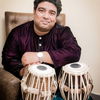
This program is a journey into the world of Hindustani classical music, the North Indian classical tradition, performed on the sarod with live tabla accompaniment. The sarod’s deep, resonant tone captures both meditative stillness and vibrant rhythmic energy, carrying the heritage of the Indian subcontinent while speaking directly to the present moment.
Raga Performance (First half: about 45 minutes)
The heart of the evening will be a performance of one or more ragas, the melodic framework of Indian classical music. A raga is more than a scale; it is a living mood that evokes a time of day, a season, and an emotion. The music begins with a slow, free-flowing alaap—an unaccompanied exploration of the raga’s phrases and mood—before gradually building pulse and rhythm. With the entrance of the tabla, the performance blossoms into intricate improvisations, weaving melody and rhythm in a dynamic dialogue.
Why this matters: Each raga is a new journey. No two performances are ever the same—every note is shaped by tradition, the moment, and the energy of the audience.
Lighter Classical & Semi-Classical Pieces (Second Half: about 30 minutes)
To complement the raga, I often include pieces that connect tradition with accessibility:
Dhuns (folk-inspired melodies): Bright, playful, and rooted in the musical traditions of villages and daily life.
Rabindrasangeet (songs of Rabindranath Tagore): Soulful melodies from Bengal set to timeless poetry, bridging classical and lyrical traditions.
Ghazals or folk tunes: Romantic and expressive, these pieces highlight the adaptability of the sarod beyond purely classical structures.
Why this matters: These selections create an open, inviting space for audiences. They show how Indian classical music embraces not only depth and discipline, but also joy, poetry, and community.
My Approach
I choose these pieces because they reflect the full spectrum of what the sarod can express—from meditative introspection to playful celebration. The mix of traditional raga performance with semi-classical and folk elements allows audiences, whether new or seasoned, to experience both the depth of Hindustani classical music and the living cultural tapestry of the subcontinent.
Each program is shaped in the moment. I often welcome audience requests, adapting with dhuns, folk melodies, or Rabindrasangeet, so the evening feels personal and shared. For me, music is a dialogue, and Groupmuse is the perfect space for that exchange.
Where does this music come from?
Tonight’s music comes from the rich tradition of Hindustani classical music, which has flourished in the Indian subcontinent for centuries. Rooted in the ancient systems of raga (melody) and tala (rhythm), this tradition developed in temples, courts, and gatherings, where music was not just entertainment but a spiritual and communal experience. The sarod itself traces its lineage back to instruments like the rabab, evolving into its present form in the 19th century as one of the principal voices of North Indian classical music.
I began my journey in the Shahjahanpur Gharana with Late Jayanta Roychowdhury, and for over 25 years I have trained in the Maihar Gharana under Pt. Alok Lahiri—a school shaped by Ustad Allauddin Khan, who brought together diverse influences to form a modern, expansive approach to Indian music. This commitment to musical lineage connects every performance to a larger story: one of teachers and students passing on knowledge, of traditions adapting to new times, and of music continuing to bring communities together across generations.
Location
Exact address sent to approved attendees via email.
This is an outdoor groupmuse
A live in-person performance in a backyard or another outdoor space. They're casual and friendly, hosted by community members.
Hosts

Attendees
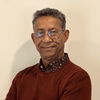
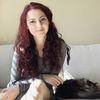



















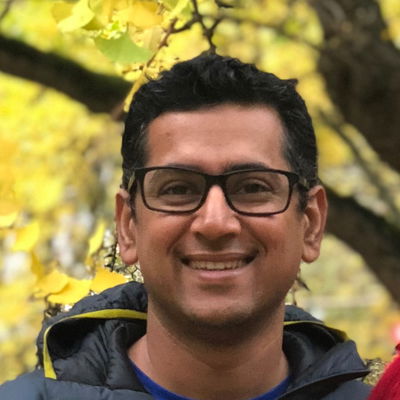

 Continue with Facebook
Continue with Facebook
 Continue with Google
Continue with Google
 Continue with Apple
Continue with Apple
Comments (2)
Comment sections are only for participants.